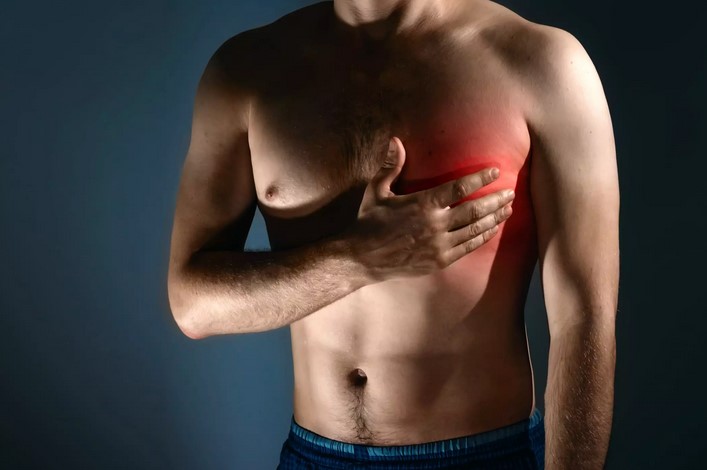
A torn chest muscle, medically known as a pectoral muscle strain or rupture, is a condition that occurs when the tendons or muscles of the pectoral (chest) region are stretched or torn. This can be caused by various factors such as excessive weightlifting, sudden movements, or direct blows to the area. Symptoms often include pain, swelling, bruising, and a decrease in chest muscle strength. Recovery from a torn chest muscle involves rest, physical therapy, and in severe cases, surgical intervention. It is a process that requires time and patience, with the focus on gradually restoring strength and function to the affected area.
Understanding Torn Chest Muscle: Causes, Symptoms, and Steps to Recovery
A torn chest muscle, medically known as a pectoralis major rupture, is a severe injury that can significantly impact an individual’s quality of life. Understanding the causes, symptoms, and steps to recovery can help those affected by this condition navigate their healing journey more effectively.
The pectoralis major is a large muscle in the upper chest, responsible for controlling arm movements such as pushing and lifting. A tear in this muscle typically results from excessive strain or a sudden, forceful movement. This injury is most common among athletes, particularly those involved in weightlifting, wrestling, and football, where intense physical exertion and contact are frequent. However, it can also occur in non-athletes due to accidents or falls.
The symptoms of a torn chest muscle are usually immediate and noticeable. The individual may experience a sudden sharp pain in the chest or upper arm, often described as a tearing or popping sensation. This may be accompanied by swelling, bruising, and a noticeable deformity in the chest muscle. The pain can intensify with arm movement, making it difficult to perform daily activities. In some cases, the individual may also experience muscle weakness or an inability to move the arm across the body.
Diagnosis of a torn chest muscle typically involves a physical examination and imaging tests such as an MRI or ultrasound. These tests can help determine the severity of the tear and guide the treatment plan. It’s crucial to seek medical attention promptly if a pectoralis major rupture is suspected, as delayed treatment can lead to complications and prolonged recovery.
The recovery process for a torn chest muscle depends on the severity of the injury. Mild to moderate tears may heal with conservative treatment, including rest, ice, compression, and elevation (RICE). Pain medication and physical therapy may also be recommended to manage pain and restore strength and flexibility to the muscle.
In the case of severe tears, surgical intervention may be necessary. This typically involves reattaching the torn muscle to the bone using sutures. Post-surgery, the individual will likely need to wear a sling for several weeks to immobilize the arm and allow the muscle to heal. Physical therapy will then be introduced gradually to regain muscle strength and range of motion.
Regardless of the treatment approach, recovery from a torn chest muscle requires time and patience. The healing process can take several months, and it’s essential to avoid rushing back into physical activities to prevent re-injury. Regular follow-ups with the healthcare provider are also crucial to monitor progress and adjust the treatment plan as needed.
In conclusion, a torn chest muscle is a serious injury that requires prompt medical attention. Understanding the causes and symptoms can help individuals seek timely treatment, while knowledge of the recovery process can set realistic expectations and promote effective healing. With the right care and commitment to recovery, individuals with a torn chest muscle can regain their strength and return to their regular activities.A torn chest muscle, also known as a pectoral muscle rupture, is often caused by excessive strain or injury during activities such as weightlifting or contact sports. Symptoms typically include sudden severe pain, swelling, bruising, muscle weakness, and a noticeable deformity in the chest muscle. Recovery involves rest, pain management, physical therapy, and in severe cases, surgical intervention. The healing process can be lengthy, often requiring several weeks to months. It is crucial to seek immediate medical attention if a chest muscle tear is suspected to ensure proper treatment and recovery.